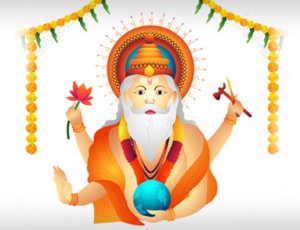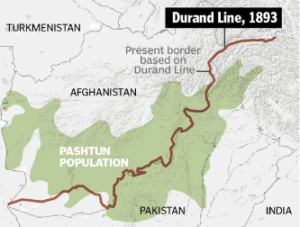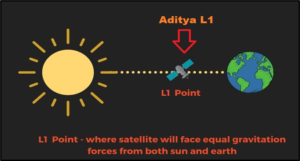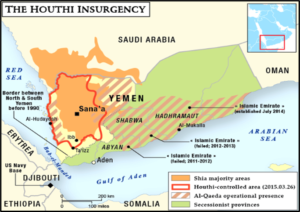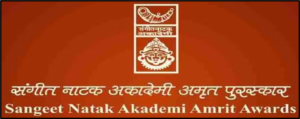Preliminary Pointers.
Vishwakarma Jayanti Tommorrow
News: Vishwakarma Jayanti tomorrow, celebrating the divine architect and creator, Lord Vishwakarma’s birth.
- Hindu festival celebrating Lord Vishwakarma, the divine architect and craftsman.
- Relevance: Honors artisans, engineers, architects, mechanics, and factory workers.
- Occurs on the 17th or 18th of September each year, following the Hindu calendar.
- Vishwakarma Jayanti’s origins in Rigveda, an ancient Hindu sacred text.
Vishwakarma Jayanti 2023 Date
- Celebrated on September 17, coinciding with the birthday of Prime Minister Narendra Modi.
- Celebrated on Dwitiya Tithi of Shukla Paksha in the month of Bhadrapada.
- Alternative Names: Also known as ‘Bhadra Sankranti’ or ‘Kanya Sankranti.’
Significance of Vishwakarma Jayanti
- Honors the skills and craftsmanship of artisans and workers.
- Celebrates the celestial builder of the universe, Lord Vishwakarma.
- Promotes the value of all forms of work.
- Marks the start of new ventures and the worship of tools and machinery.
Vishwakarma Yojana
- Announced by Prime Minister Narendra Modi during Independence Day speech.
- Aims to support those with traditional skills.
- Focuses on individuals who use basic tools for their livelihood.
- A step towards empowering and uplifting skilled artisans and craftsmen.
Torkham border reopens between Pakistan-Afghanistan (GS – 1)
News: Torkham border reopens after week-long closure on Durand Line between Pakistan and Afghanistan for pedestrians and vehicles.
Durand Line: Afghanistan-Pakistan Border
The Durand Line Agreement
- The Durand Line, a 2,640-kilometer border separating Afghanistan and Pakistan,
- It was established in 1893 through an agreement between Sir Mortimer Durand and Afghanistan’s Emir Abdur Rahman Khan.
- It spans from the tripoint with China’s Wakhan Corridor to the Gomal Pass near the Pakistani city of Kohat.
Historical Context: British Colonial Rule
- At the time of the Durand Line’s creation, both India and Pakistan were under British colonial rule.
- India was controlled by the United Kingdom until gaining independence in 1947.
- Pakistan also emerged as an independent nation in 1947.
- After India-Pakistan Partition Durand line lies between Pakistan and Afghanistan
Ethnic Groups: Punjabis and Pashtuns
- Two major ethnic groups, Punjabis and Pashtuns, inhabit the regions near the Durand Line.
- These groups are primarily Sunni Muslims.
- Punjabis constitute the largest ethnic group in Pakistan, while Pashtuns are the largest in Afghanistan.
Pashtuns’ Historical Territory: Conflict and Division
- Pashtuns were historically dominant in northwestern Pakistan, controlling significant territory until their defeat by the British in 1847.
- The British created the Durand Line, dividing Pashtuns into two countries: Afghanistan and Pakistan.
- This division caused resentment among Pashtuns in Pakistan, as they came under Punjabi rule.
Colonial Legacy: Unconsidered Ethnic Boundaries
- The Durand Line’s drawing by British colonial officials disregarded the ethnic composition of the region, resulting in ongoing tensions.
- The border has become a focal point for clashes between the Pakistani army (mostly Punjabis) and the Taliban (mostly Pashtuns).
Pashtun Aspirations: Calls for Autonomy
- The Afghan government supports Pashtun autonomy within Pakistan.
- While some Pashtuns seek a separate state within Pakistan called Pashtunistan, corresponding to the region where Pashtuns primarily reside.
Current Status
- The Durand Line remains a source of tension and disputes between Afghanistan and Pakistan, with no clear resolution in sight.
14th World Spice Congress (WSC) commences in Navi Mumbai
- News: A three-day event will take place from September 15 to 17 and will feature prominent members of the global spice industry.
- The 14th World Spice Congress, a major spice event, got underway today in Navi Mumbai. In his opening remarks for the 14th World Spice Congress, India’s Additional Secretary for Commerce stated that the country’s current $4 billion in spice exports is predicted to increase to $10 billion by 2030.
India and the Spice Industry
- India is an important player in the world’s spice trade. India has long been considered the world’s epicentre for spices.
- There are a number of factors that need to be improved throughout the entire supply chain, from growers to marketers, to ensure that India maintains its traditional strength.
- To facilitate testing labs, quality standards evaluation, etc., the Government and the Spices Board must jointly develop plans and programs.
- All the participants, attendees, exhibitors, and producers will have numerous business chances throughout this three-day event.
WSC 2023 theme: It is “VISION 2030: Sustainability, Productivity, Innovation, Collaboration, Excellence, and Safety” (S.P.I.C.E.S).
| WSC
● Over the course of its three decades of existence, the World Spice Congress (WSC), the association of the international spice business, has evolved into the most suitable forum for discussing the issues and considerations of the sector. ● The World Spice Congress offers a chance to learn more about the industry and is led by the Ministry of Commerce and Industry, Government of India’s Spices Board, with assistance from other trade and export groups. ● The important participants in the industry—producers, traders, processors, exporters, and regulators from all over the world—discuss and deliberate in detail on trade, sustainability, quality, and food safety efforts, current developments, worries, and future prospects. Spice Board India ● The flagship company for the growth and international promotion of Indian spices is the Spices Board, which is part of the Ministry of Commerce and Industry of the Indian government. ● The Board serves as a conduit between Indian exporters and foreign importers. Every sector of the industry has been involved in the initiatives the Board has been leading to promote the excellence of Indian spices. |
Aditya L1
News: After completing its fourth manoeuvre, Aditya L1 will depart Earth’s orbit. The Solar Observatory will set up shop in a halo orbit around the L1 point after travelling nearly four months to get there, a distance no previous Indian spacecraft has ever travelled.
- The Solar Observatory will set in a halo orbit around the L1 point after travelling nearly four months to get there, a distance that has not been travelled by any other Indian spacecraft. There, it will use seven sophisticated instruments to study the Sun.
- According to Nigar Shaji, the project director of Aditya L1, satellites launched by ISRO are typically put in orbits around the Earth or other celestial bodies, such as the Moon and Mars.
- Aditya L1’s spacecraft will orbit a point in space rather than a celestial object. The gravitational force at the L1 point is perfectly balanced; the spaceship will be inserted around it as if it were a virtual planet. ISRO has not previously performed this halo orbit insertion at L1.
Yemen’s Houthi rebels
News: Houthi envoys heading to Riyadh for ceasefire talks with Saudis.
- A delegation from the Houthi rebels in Yemen has arrived in Saudi Arabia to engage in discussions with the country about putting an end to the long-running conflict that has been ravaging the region’s poorest country.
- Riyadh and the Houthis, who have had control of Yemen’s capital Sanaa since September 2014 and are backed by Iran, are still negotiating, although it is still unclear what terms are being discussed.
- However, this first public journey by a senior Houthi delegation comes after regional adversaries Saudi Arabia and Iran established a Chinese-mediated truce earlier this year, as well as a flurry of diplomatic engagement between the various proxy warring parties.
What is the yemen issue?
The Houthis: who are they? ● It was founded in the 1990s by Hussein Badreddin al-Houthi, a Shia majority resident of Yemen. A group of Zaidi Shia Muslims ruled a kingdom in the region for almost a millennium.
|
Windfall Tax
News: Beginning in September, the government will charge a higher windfall tax on the sale of locally produced crude oil, increasing it from $6,700 to $10,000 per tonne. With effect from September 16, the special additional excise tax (SAED) on aviation turbine fuel (ATF) has been decreased from $4 to $3.50/litre.
What is the tax? It is a greater tax applied by the government on specific industries when their profits are unexpectedly high.
When is it imposed?
- This tax is imposed by the government if it observes a sharp rise in an industry’s revenue. These revenues, however, are unrelated to whatever the corporation actively pursued, such as its business plan or expansion.
- As a result, when an industry suffers a significant increase in revenue as a result of unrelated external events, a Windfall Tax is placed on its revenues.
Justification for the imposition of the windfall tax
- Redistribution of unanticipated gains, when high prices benefit producers at the expense of consumers;
- To support social welfare initiatives;
- As an additional revenue source for the government;
- As a tool for the government to decrease the country’s wider trade imbalance.
Sangeet Natak Akademi Amrit Awards
News: 84 performing artists will receive Sangeet Natak Akademi Amrit Awards from the Culture Ministry.
- Artists beyond the age of 75 from all over India who have not previously received a national honor will be granted the special achievement award.
- According to the Sangeet Natak Akademi, their choice exemplifies India’s vast and varied cultural heritage.
- The honour comes with Tamrapatra and Angavastra, as well as a purse containing one lakh rupees.
- Vice President Jagdeep Dhankhar will present awards at Vigyan Bhawan.
| Sangeet Natak Akademi
● The country’s premier performing arts organisation, Sangeet Natak Akademi, was founded in 1953 with the goal of preserving and promoting the rich intangible cultural heritage of India, which is portrayed via music, dance, and theatre. ● The Akademi’s General Council is in charge of running the organisation. The President of India appoints the Chairman of the Akademi for a five-year term. ● The Akademi’s Memorandum of Association, adopted at its registration as a society on September 11, 1961, outlines the organization’s duties. ● The Akademi’s registered office is located in New Delhi’s Rabindra Bhavan. ● The Sangeet Natak Akademi is an independent division of the Indian Ministry of Culture. Awards and honours by Sangeet natak Akademi: ● The highest national honour given to working artists is the Sangeet Natak Akademi Award. ● The Sangeet Natak Akademi bestows classical rank on nine Indian dance styles. ● The Akademi also offers Fellowships to distinguished musicians, dancers, and researchers in these fields, and it established the Ustad Bismillah Khan Yuva Puraskar, an annual prize for young musicians, in 2006. ● Tagore Puraskar and Ratna Tagore: Rabindranath Tagore’s 150th birthday was celebrated with the awarding of the Sangeet Natak Akademi Tagore Ratna and Sangeet Natak Akademi Tagore Puraskar. |

